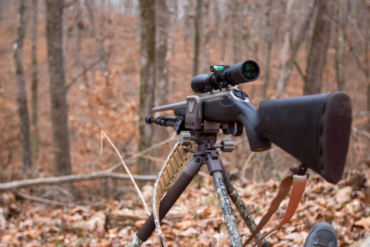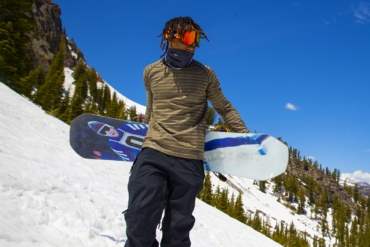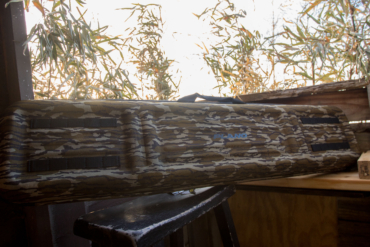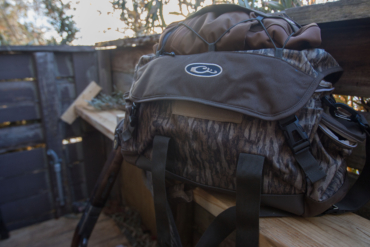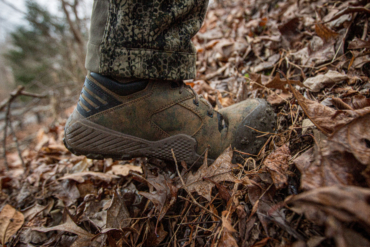Randy Newberg and Corey Jacobsen leave no stones unturned in this very listenable podcast dedicated entirely to hunting elk.
Okay, they do leave a few stones unturned. But c’mon. You gotta leave some lessons for the students. It’s very martial artsy in that way, and Randy Newberg and Corey Jacobsen of Elk 101 are the senseis.
I’ll break it down in short: Elk Talk is a podcast that is all about elk.
In my own hunting life, I’m heading into my seventh season as a big game hunter. Some knee issues kept me from really hunting elk the past few years. But I’m now back in action and really hoping to punch my first elk tag. And, as a journalist and writer, my first instinct is to research, research, research.
What are elk’s habits? What do they eat? Where do they want to be, and when? How in the heck do I call an elk in?
These are just a few of the questions that I began to dig into. And though I hit on a few resources that were really great, the Elk Talk podcast is prime real estate for shared knowledge from two highly experienced and dedicated elk hunters.
Here are my top five takeaways after listening to the Elk Talk series in preparation for my upcoming hunting season. Take these at face value, and then dig into the episodes to learn more.
5 Elk Hunting Lessons From the Experts
E-Scouting Is Your Best Friend

“You’ve gotta find elk to hunt elk,” Randy Newberg says repeatedly. And thankfully, the act of finding elk doesn’t always involve your feet. Jacobsen and Newberg go into detail on how e-scouting has changed their hunting efforts, and only for the better.
By using OnX Hunt, Google Earth, GoHunt, and/or other online maps, you can delineate areas that might hold elk. These areas might include northern-facing slopes, access to water, topographical benches, historic burn data, and other points of interest for elk habitat.
Through e-scouting, you can save multiple waypoints ahead of time, share them with hunting partners, and begin to create your on-the-ground scouting plan.
Listen to Episode #49: Maps and SoftwareBackcountry Camping Isn’t Always Best
One point that comes up throughout the podcast is that Newberg tends to find the most success by staking out a base camp with access to multiple points of interest. Add in a day of scouting, and that success rate climbs even higher.
One spot may look like perfect elk country, but if the elk aren’t in there, it’s not worth hunting. Better to have your vehicle nearby and cruise on to the next e-scouted location to verify one way or another if elk are in that space.
You can certainly e-scout and create a backcountry plan, but the disappointment of packing miles and miles into a spot where there are no elk can be, for lack of a better word, soul-crushing. Especially if you’re carrying an expensive non-resident tag.
Of course, if you have an established backcountry camp where you know elk will be, this might not apply to you. But if you’re staking out new country, this is probably the way to go.
Listen to Episode #4: Choosing a CampsiteCall Aggressively, Call Often

You’ll find throughout the episodes that the yin and yang of Newberg and Jacobsen are thus: Newberg is primarily a rifle season specialist, and Jacobsen is primarily an archery season specialist. The two kick around bouts of knowledge that span the entirety of the elk hunting time frame.
Jacobsen is an aggressive elk caller. His standard tactic is to bugle at the truck and see if any elk are willing to engage in, what else, elk talk. If they’re not there, he tries a new spot.
Sensing a theme?
The conversational aspect of Jacobsen’s calling encompasses two things: fighting or flirting. And with each of them, you have to be confident that you’re speaking their language.
Jacobsen is a world champion elk caller. He’s been talking to elk for 30 years. I plan on listening to the guy. Seems he might know more than most.
Listen to Episode #59: How to Find ElkElk Don’t Like Roads
Yes, a lot of people like to road hunt. And yes, occasionally they get lucky. But for the most part, elk avoid areas within a mile or so of roads. And there’s a bunch of science that backs up that data.
Luckily, much of the West is rife with public land in which one can abscond from the road and into the backcountry. But, you’re going to have to hike for it. You can use a variety of e-maps to figure out roadless areas and break down your huntable area a bit in that regard.
The good news is that you’ll find fewer humans off the roads. The better news is you might just pack an elk out because of it.
Listen to Episode #58: Backcountry Elk Hunting With Rocky Mountain Elk CallsBecome an Amateur Ecologist

The four keys to finding elk are understanding where food is, where water is, where security lies, and where they are in the breeding cycle. And keep in mind that all of these needs change in spades throughout the year.
Sounds easy, right? Right. SUPER easy. Once you understand the complete ecology of an elk.
So, you gotta dig in. Be a nerd. Read studies. Think like an elk.
Newberg talks about multiple studies on elk over multiple episodes. Thankfully, he doesn’t give away the information on all of them. Any podcast that pushes people to truly do their own research and engage in some critical thinking is a podcast I’ll stand behind.
But, you will gain a TON of ecological knowledge just listening to these two rap about elk, elk behavior, and habitat.
Listen to Episode #32: Hunting Cow ElkFinal Thoughts on the Elk Talk Podcast
This isn’t a short audio series on elk hunting. There are currently 74 episodes of Elk Talk, and more to come. You can actually listen to this for more than 3 days without stopping. Fire up the Red Bull, chiefs.
And these guys aren’t run-of-the-mill hunters, though they would probably caution you against taking their advice out of humor and humility.
Whether you’re heading out on an archery elk hunt or rifle elk hunt, looking for a cow to fill the freezer or a trophy bull, these guys have the wisdom to share on the matter. For me, personally, I still feel like a major elk rookie. But at least I’m armed with more knowledge and insight that I can hopefully apply in the field.
And, if you’re needing elk-focused content that really goes on a deep dive, check out Elk 101’s University of Elk Hunting. For just under $100, Jacobsen has built out an in-depth course that won’t give you a bachelor’s degree, but it might just get you into a bachelor herd of bulls.



